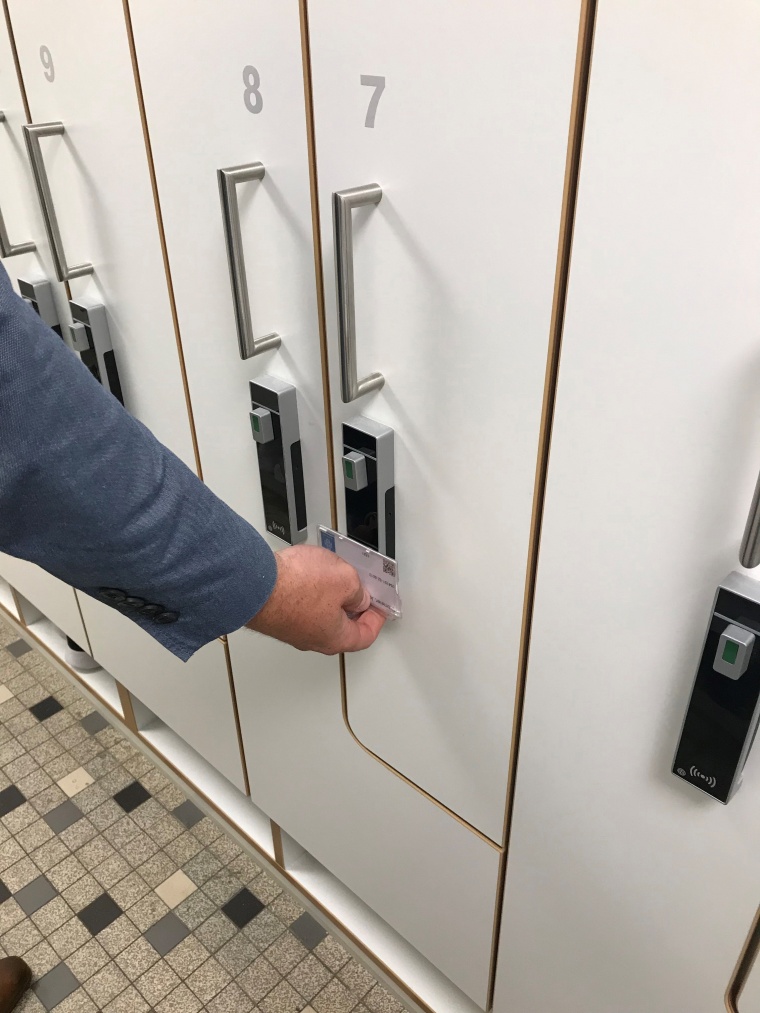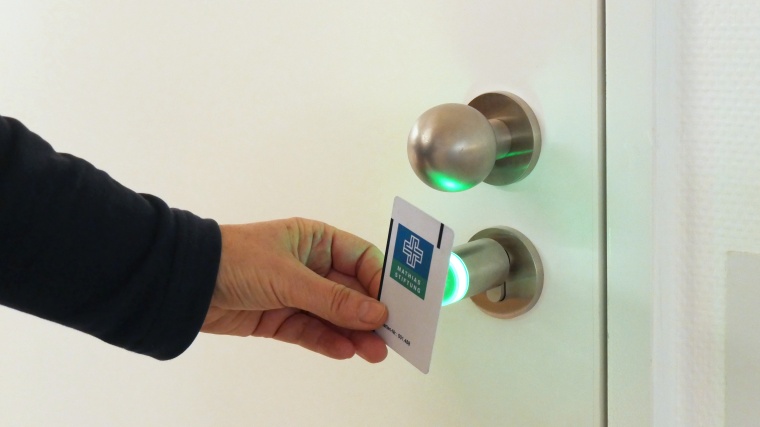Mathias Foundation Adopts the Smart AccessOne Solution from CES
Everything on an ID Card: Security and cost reduction are prime considerations in the operation of senior citizen nursing and healthcare facilities.




The Mathias Foundation pursues specifically Christian, non-profit and charitable objectives with the aim of promoting and carrying out the work of the Caritas organization, care of the elderly, and healthcare. As one of the largest employers in the inpatient and outpatient health and care services in the northern Muensterland region, more than 4,400 employees provide aid to persons in need. With three acute care hospitals, a rehabilitation clinic, six senior citizen and care facilities, medical care centers, outpatient nursing services, its own training facility and service organization, the Mathias Foundation is an excellent example of holistic health care from a single source.
Security and cost reduction are prime considerations in the operation of senior citizen nursing and healthcare facilities. Digitalization plays a key role here and, as a digital pioneer – digital patient records were introduced 10 years ago – the Mathias Foundation had a vision: to map all security-relevant processes using a single means of authentication. This was implemented with the introduction of the AccessOne access control system from CES, with the option of integrating third-party systems.
The requirements were to organize access management and also to integrate various hospital-related systems such as laundry services, lockers in changing rooms, methods of payment and documentation centers into the access control system via suitable interfaces. Johannes Ortmeier, departmental head of electrical systems for the Mathias Foundation and site manager at the Klinikum Ibbenbüren, compared the packages offered by various suppliers and service providers to the foundation’s requirements profile and put them through their paces. “The access control system is not just an electronic locking system for us, but also a process tool that efficiently controls the security-relevant processes in our properties. Our focus is therefore on establishing a sustainable system that can be expanded in successive stages,” says Ortmeier. He made his decision because of the broad functional spectrum of the AccessOne access control system from CES, the economic and long-term full-cost analysis, and the services offered by CES partner Konntec Sicherheitssysteme GmbH.
Authentication by ID Card
AccessOne is open to the integration of a wide variety of services that are offered in a healthcare establishment. Ortmeier adds: “The multi-application ID cards have provided our employees with a means of authentication that allows them to easily register on various hospital systems and thereby confirm their identity.” For example, an application on the ID card controls the access rights management for the locking devices. Another application, deliberately separate from the access control system, transmits the employees’ personnel numbers to the hospital systems in a coded, data protection-compliant format. Thanks to the ID card creation facility in the software and with the aid of a printer, the foundation can create the ID cards itself. The layout is placed on the card and all applications, including those of third parties, are coded in a single printing operation.
External access points, internal doors with security relevance and frequently used doors, such as entries to changing rooms or the laundry room, are integrated into the access control system. Reader units with update functions are installed at central locations and are linked to the controllers of the access control system. At the start of their shift, employees identify themselves on the reader with their ID card. Their authorizations are checked in milliseconds, updated and, if they are correct, the door is opened. Authorizations for mechatronic offline locking devices, such as electronic cylinders, electronic handles, wall terminals and furniture locks, are also updated during the reading operation. In addition, system information from the locking devices is sent to the central access controller during this operation. If a member of staff loses their ID card, the card can be blocked by the software. This information is sent to each controller and updater in real-time. The information is also sent to the other employee ID cards and thereby distributed to the devices.
Time-Restricted Authorization for Lockers
When the two sites merged into a single hospital, it quickly became apparent that there were not enough lockers for the additional staff. There was not, however, sufficient space to install additional lockers in the changing areas, nor was it economically viable to set up extra changing rooms on the wards. It was, therefore, initially decided to install ‘Z lockers’ that double the number of lockable compartments in the same space. But the most significant change was the integration of RFID locks, i. e. conversion of the lockers from mechanical locks to an electronic solution with a time-limited period of use. Today, a locker can only be occupied by one person for a maximum of 12 hours. During that period, the same person cannot also take a second locker. If the occupancy time expires but the employee has not vacated the locker, the locker remains locked but can now only be opened by a ‘locker master’.
After initial reservations, the clinic staff are now pleased with the solution that enables each employee to access an empty locker at the start of their shift. The next idea for even better utilization of the locker system is currently in the process of implementation. In future, information terminals with a PIN pad will improve user comfort still further. If a staff member forgets which locker they are using, they present their ID card at the terminal and enter their PIN. The display then indicates the locker number and the occupancy time remaining. A further function is the temporary blocking of lockers, which helps service staff to plan and carry out cleaning operations on the functioning lockers.
Personal or Shared Use
Depending on the programming, an RFID furniture lock can be set up for personal use or for the use of a group – the design of the lock is the same in both cases. For staff, the advantage is that rather than each person having to obtain the single ward key individually, each of them already has authorization for the communal locks on their ID card. This also simplifies the documentation of when the locker was opened and by whom.
Laundry System Interface
Another function, the Kemas laundry system, is also linked to AccessOne via an interface. Authorized employees identify themselves with their ID card at the Kemas terminal, which then releases the revolving door to the clean laundry area. The employee collects their work clothing, which is fitted with RFID chips and leaves the laundry area through another revolving door. At the end of their shift, the employee leaves the used clothing at the automated return point. The Kemas laundry system logs the collection and return of the clothing, while assignment to the individual is via the ID card.
There are still more ideas for linking technical and security-related processes to AccessOne in the future. In addition to the intelligent functions that are currently available in the software package, individual modifications can be made at any time. And as an open system platform, there are no limits to the integration of third-party systems of all kinds.
Business Partner
CES C.Ed. Schulte GmbH ZylinderschlossfabrikFriedrichstr. 243
42551 Velbert
Germany
most read


Is Your Venue Ready for Martyn’s Law?
Martyn’s Law demands stronger security by 2027. Is your venue prepared to protect and respond?

GIT SECURITY AWARD 2026 - The winners have been announced!
GIT SECURITY AWARD 2026: The best safety and security solutions of the year - now an overview of all winners

The Benefits of AI-based Video Surveillance Solutions for Sports Venues
Dallmeier Interview: Artificial intelligence Makes Stadiums Smarter

Integrated and Futureproof: Traka’s Next Chapter
Interview with Stefni Oliver on Traka’s Vision for the Future







